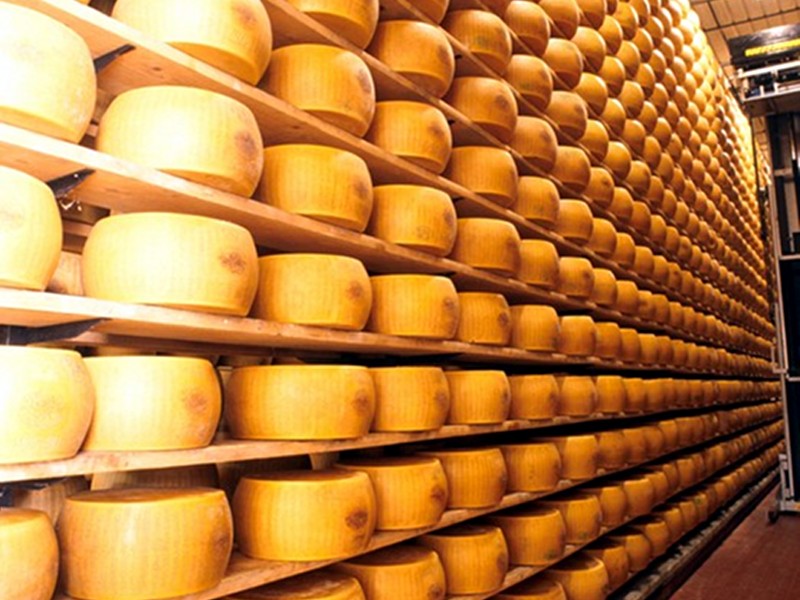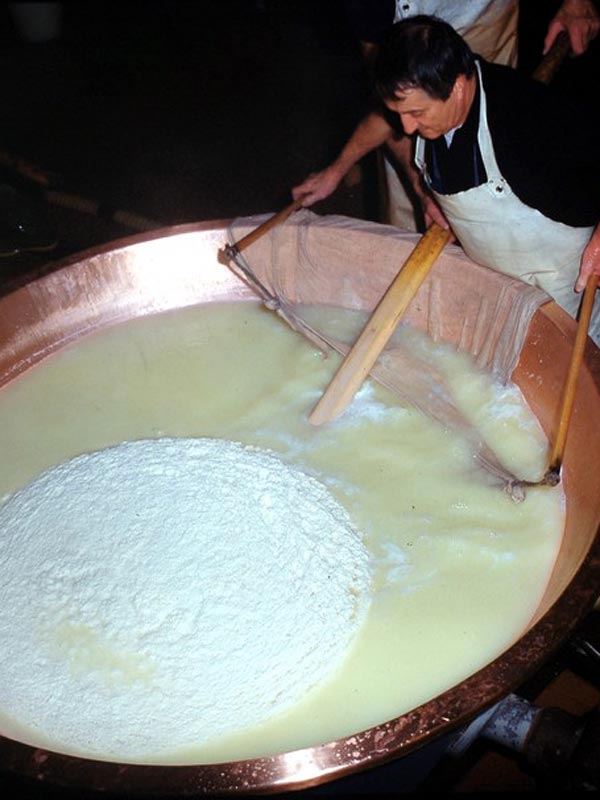Parco Nazionale Appennino Tosco-Emiliano
www.parcoappennino.itParmigiano Reggiano PDO
The most famous cheese in Italy and in the world is produced at the foot of Appennino Reggiano and Parmense, and well represents the landscape where meadows, alfalfa pastures, and forests alternate.
Parmigiano Reggiano has a long history which probably began in the monasteries and aristocratic estates: as a matter of fact, only the large estates could provide the necessary quantity of milk to produce one single round of cheese (which is obtained today with about 500 liters), considering the fact that a cow in the Middle Ages produced about 3 liters of milk per day. The production of a cow's milk "formadio" in the Apennines of Emilia is witnessed since the 13th century; it is also mentioned by Boccaccio, Teofilo Folengo, and Burchiello.
Parmigiano was still recently processed in the so-called "caselli", curious octagonal or hexagonal buildings with no windows but with walls made with a brickwork grating enabling the circulation of air. In the middle of the one and only premise, an upside-down bell-shaped copper boiler gathered the milk which was heated with wood-burning fire.
Today, the producers have adjusted to the rules of the health boards, but the bells, or "caldere", are not very different from the traditional ones: in steel with an interior copper covering, they contain about 10 quintals of milk, which gets partly skimmed in special basins (the evening milking). In each "caldera", two rounds of Parmigiano Reggiano are produced.










